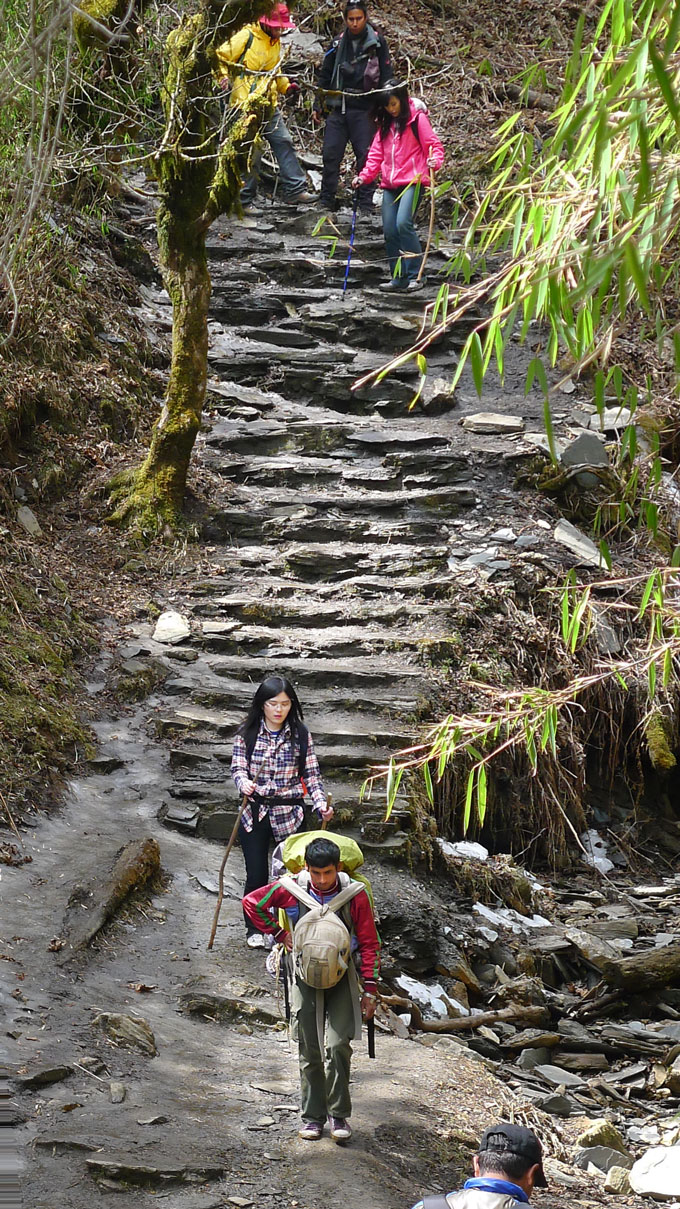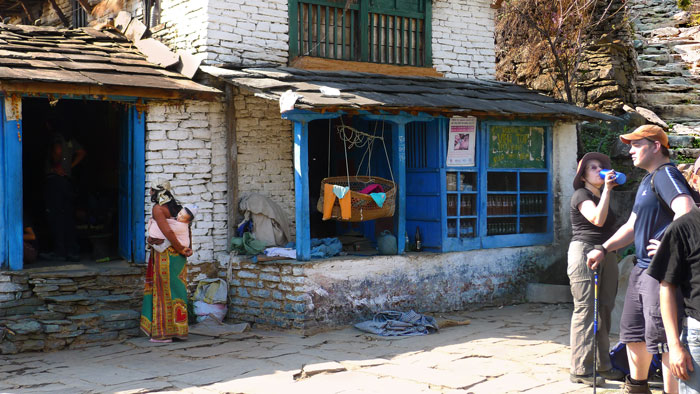Down the Up Staircase
Apr 18, 2011
 That's my sister's boot toe and walking stick probing for the next step as she prepares to work her way down a mountainside in Nepal.
That's my sister's boot toe and walking stick probing for the next step as she prepares to work her way down a mountainside in Nepal.
Nepali trekking trails, at least in the vegetated, more or less inhabited zones of the Himalayas, are mostly paved with stones, and the steep stretches are fashioned into endless rocky staircases. Donkeys can climb the staircases with ease, as can most Nepalis and probably even fit young Americans.
Building the staircases was part of the terracing project that has occupied Nepalese farmers for centuries. Rocks were pried up out of the soil and redeployed into retaining walls for thousands of tiny terraces, holding back the hillsides so that plows pulled by buffalo could work the land. Over the generations, as plows and hoes and hoofs and toes have continued to kick up rocks, farmers have built themselves stone houses and connected the houses to their fields with steep, stone-paved, stone-staircased trails.
Terraces and paved trails minimize soil erosion on steep slopes. Also, if the stones are cobbled together into stairsteps along the steepest stretches, the trails can head straight up and down without switchbacks, thus facilitating travel while minimizing the amount of land removed from cultivation.
On the other hand, straight up and down the stairs is . . . well, one elderly Nepali, who was scampering up the trail as we were struggling down, paused briefly to bless our knees.
One of the staircases we struggled up was said to contain more than 8,000 steps. My sister kept count, but irregularities in the size and shape of the steps led to uncertainty as to the exact number.
Every million billion steps or so there is a rest area, also built of stone, backed up by a stone wall with a low shelf. The shelf isn't actually low enough for sitting on, but it's about the right height for resting a backpack or other burden.
Below are three more pictures of stair-stepping in the Himalayas. The terraced fields look brown and barren, not because they have been abandoned but because we were traveling early in the springtime, before most crops had sprouted.
The last picture shows a rest stop in a village, with a trail that climbs onward and upward via the staircase at the extreme right of the scene.

